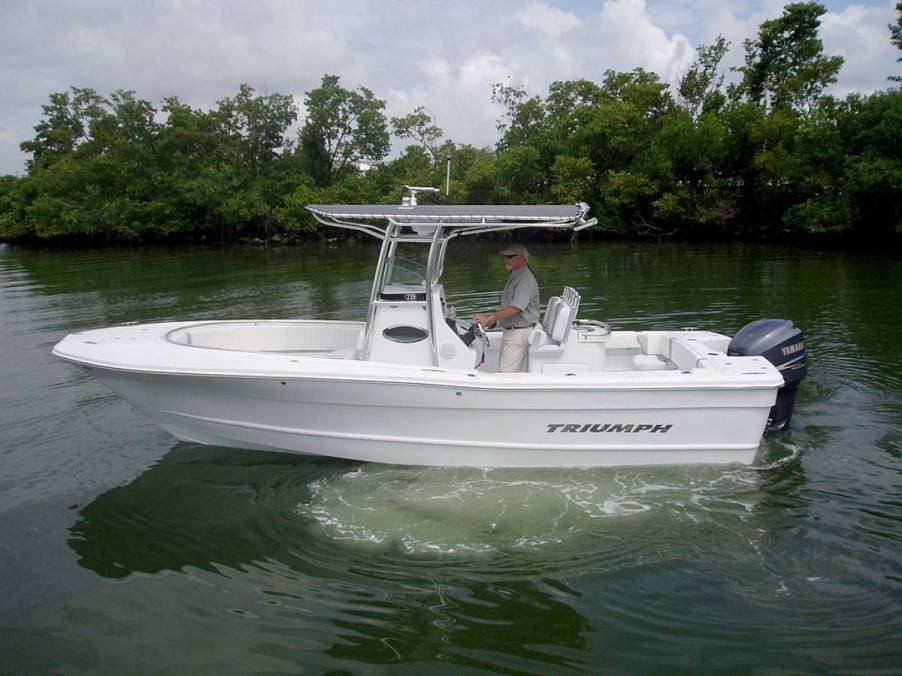
What Is Considered Good Fuel Economy for a Boat?
Unlike cars, it’s often hard to establish a standard boat fuel economy rating because there are so many different factors that can impact the real-world fuel economy of a boat. However, in general, smaller boats with smaller engines tend to have better fuel economy, though this is not always the case. Here’s a look at the types of fuel economy numbers to expect on larger vs. smaller boats.
What factors impact the fuel economy of a boat?
Determining the fuel economy of a boat is not a completely straightforward process as there are a ton of factors that impact the fuel economy of every individual boat. However, according to Go Downsize, the biggest factor that affects every boat is the engine that powers it. In addition, the length of the boat, the amount of weight on the boat, and the overall size of the boat significantly impact its fuel economy.
Another key factor that affects fuel economy is how fast the boat is being driven. Of course, this is a factor that is more controllable than some of the others. Ultimately, the faster the boat is driven, the worse its fuel economy will be as it burns through fuel at a faster rate.
While speed is a factor that is within the driver’s control, one factor that isn’t is the weather and water conditions. For example, having to drive against the wind will no doubt decrease gas mileage.
A final important note when it comes to factors that impact the fuel economy of a boat is that the overall condition of the boat will likely contribute to poor fuel economy. If a boat is not properly maintained, its gas mileage will undoubtedly suffer.
How is fuel economy impacted by the size of the boat?
In most scenarios, the size of the motor and the size of the boat go hand-in-hand. This means that just as the motor of the boat is a main factor in determining fuel efficiency, so is the overall size of the boat. Go Downsize also reports that many small watercraft boats can be expected to use three to eight gallons of gas per hour at cruising speed. In contrast, larger speed and motorboats can use anywhere from 20 to 30 gallons an hour.
When it comes to achieving a good fuel economy, what type of fuel is being pumped into a boat is also a crucial element to take into consideration. According to Sportsman, the best bet when it comes to fueling a boat is to always use whichever fuel is specifically recommended by the manufacturer of the motor.
Another important note is that boats should never be utilizing any type of fuel that contain more than 10% ethanol, like E15 or E85 fuels. Given the fact that boat motors are not designed to handle the corrosiveness of high levels of ethanol, pumping these types of fuels into a boat can significantly diminish the longevity of the motor while also worsening the fuel effiecncy.
In addition, ethanol is an attractant of water which means using this type of fuel can end up flushing water into the fuel system, which can also have devastating consequences for the longevity of the boat and motor.
Average gas mileage expectations on larger vs. smaller boats
According to Boating World, a typical-sized boat gets about four to five mpg on average. However, the motor type will always factor into a boat’s fuel efficiency. Some motors can get up to 10 mpg or more. Plus, diesel-powered motors tend to have a much more efficient fuel economy and can easily get up to 20 mpg.
It would be easy to assume that a smaller boat will always have a better fuel economy compared to a larger boat. However, this is not always the case. The fuel economy will largely be impacted by the motor-to-weight ratio.
So, if a smaller vessel is only using one motor that isn’t necessarily bringing enough hp for the size of the boat, it will have a worse boat fuel economy compared to a larger vessel that has enough motors and hp to compensate for the weight of the boat.


